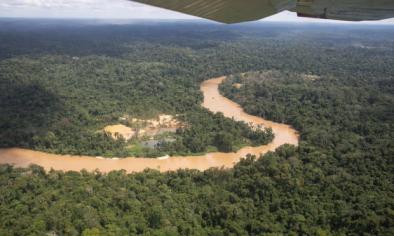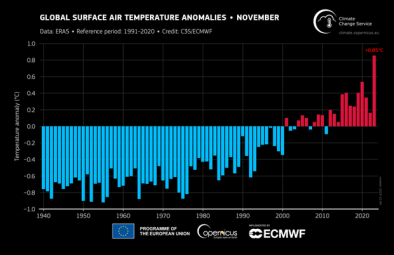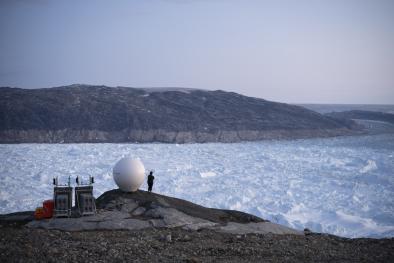Science Source
Bottom marine heatwaves along the continental shelves of North America
Study key findings & significance
- Heatwaves unfolding on the bottom of the ocean can be more intense and last longer than those on the sea surface
- This is the first assessment of marine heatwaves along North America's continental shelves
- These bottom heatwaves ranged from 0.5 degrees Celsius to 3°C warmer than normal temperatures and could last more than six months — much longer than heatwaves at the surface
Author quotes
"It's a little less clear if climate change is strongly impacting bottom mar
Related Content
Headline

Feb 15, 2024 | Climate Nexus Hot News
Amazon Could Reach Tipping Point By Midcentury
Headline

Jan 16, 2024 | Climate Nexus Hot News
2023 Smashes Hottest Year Record
Headline

Dec 7, 2023 | Climate Nexus Hot News
It’s Official - 2023 Is World's The Hottest Year On Record
Headline

Dec 7, 2023 | Climate Nexus Hot News
Earth Veering Closer To Dangerous Tipping Points
Science Source
Enhanced Asian warming increases Arctic amplification
Study key findings & significance
- Enhanced Asian warming contributes 22% of the wintertime amplified warming over the Barents–Kara Seas,
- Warming over Asia affects poleward atmospheric heat and moisture transport, which “trigger local feedbacks concerning sea ice-albedo feedback and changes in longwave radiation and evaporation, thus facilitating Barents–Kara Seas warming amplification”.
- Their findings “illuminate a new factor from remote lower latitudes affecting Arctic climate change.”
Related Content
Science Source
Variation of lightning-ignited wildfire patterns under climate change
Study key findings & significance
- "Hot lightning" strikes (those lasting much longer than average — from approximately 40 milliseconds to nearly a third of a second) are capable of transferring more heat to flammable things like trees, shrubs or grass.
- Observations of satellite data show that about 90% of US wildfires between 1992 and 2018 started because of these hot lightning strikes.
- A study of the rate of such lightning strikes over the years combined with computer simulations showed that a higher frequency of these lightning strikes


